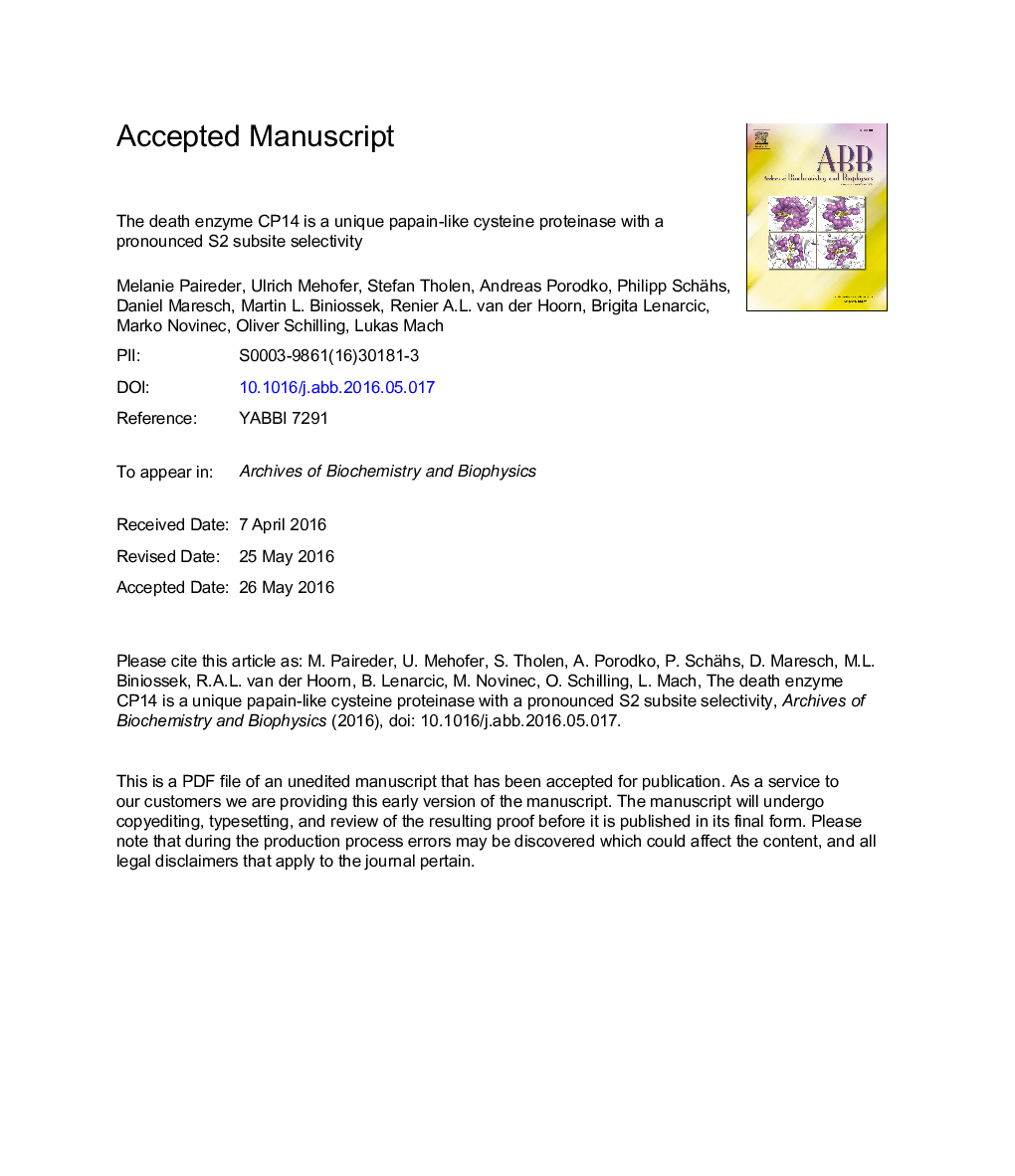| Article ID | Journal | Published Year | Pages | File Type |
|---|---|---|---|---|
| 8289212 | Archives of Biochemistry and Biophysics | 2016 | 34 Pages |
Abstract
The cysteine protease CP14 has been identified as a central component of a molecular module regulating programmed cell death in plant embryos. CP14 belongs to a distinct subfamily of papain-like cysteine proteinases of which no representative has been characterized thoroughly to date. However, it has been proposed that CP14 is a cathepsin H-like protease. We have now produced recombinant Nicotiana benthamiana CP14 (NbCP14) lacking the C-terminal granulin domain. As typical for papain-like cysteine proteinases, NbCP14 undergoes rapid autocatalytic activation when incubated at low pH. The mature protease is capable of hydrolysing several synthetic endopeptidase substrates, but cathepsin H-like aminopeptidase activity could not be detected. NbCP14 displays a strong preference for aliphatic over aromatic amino acids in the specificity-determining P2 position. This subsite selectivity was also observed upon digestion of proteome-derived peptide libraries. Notably, the specificity profile of NbCP14 differs from that of aleurain-like protease, the N. benthamiana orthologue of cathepsin H. We conclude that CP14 is a papain-like cysteine proteinase with unusual enzymatic properties which may prove of central importance for the execution of programmed cell death during plant development.
Keywords
Related Topics
Life Sciences
Biochemistry, Genetics and Molecular Biology
Biochemistry
Authors
Melanie Paireder, Ulrich Mehofer, Stefan Tholen, Andreas Porodko, Philipp Schähs, Daniel Maresch, Martin L. Biniossek, Renier A.L. van der Hoorn, Brigita Lenarcic, Marko Novinec, Oliver Schilling, Lukas Mach,
